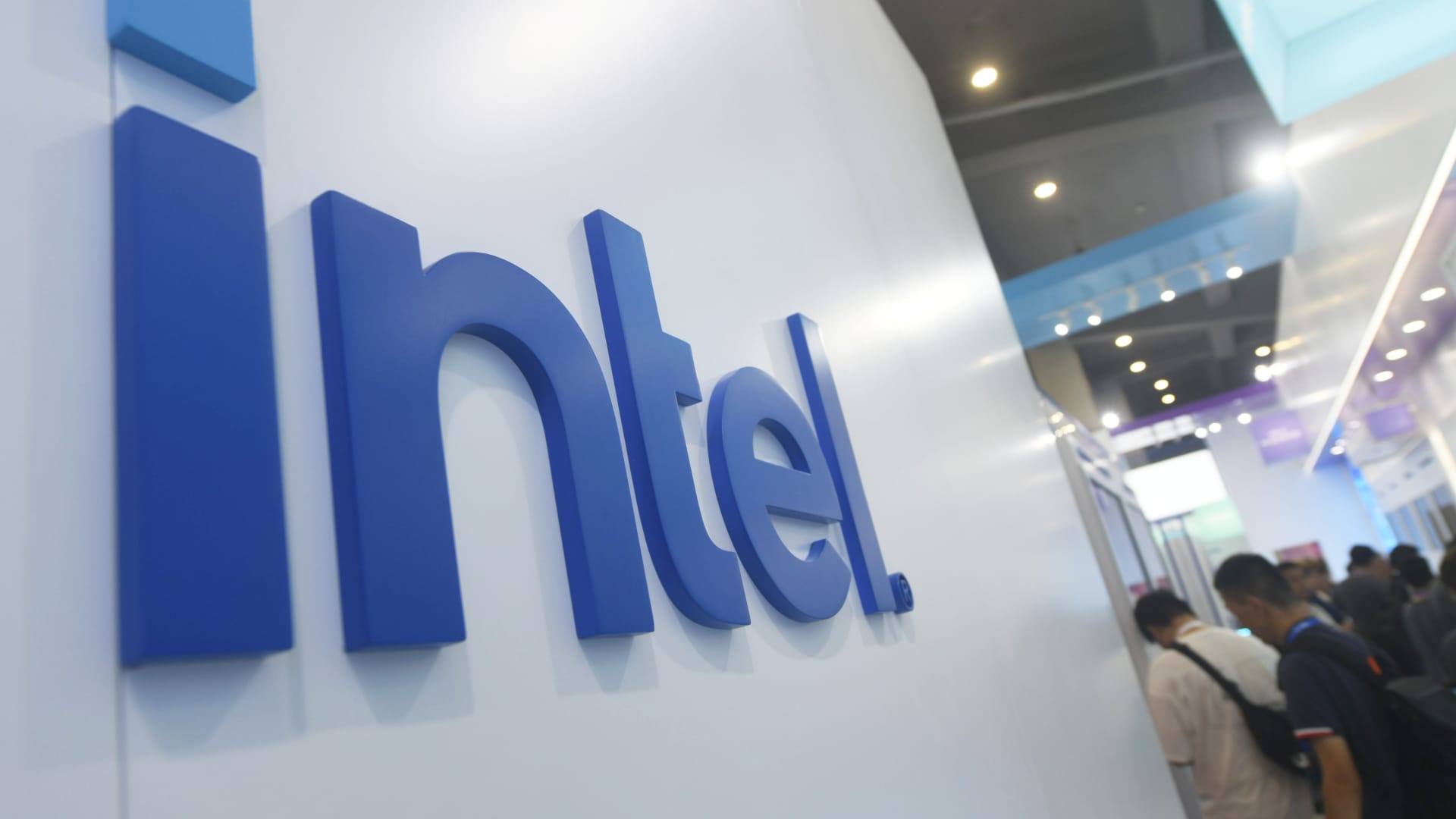Intel delivered a third-quarter revenue beat , but Wall Street is still practicing caution when it comes to the tech stalwart. In its third quarter, the chipmaker posted revenue of $13.65 billion, which was higher than the $13.14 billion analysts polled by LSEG had expected. Intel’s adjusted earnings of 23 cents per share was not comparable to analyst estimates. In its fourth quarter, the company expects revenue to come in at $13.3 billion at the midpoint, slightly below forecasts of $13.37 billion. Intel expects adjusted earnings per share to come in at 8 cents, meeting current forecasts. Overall, analysts adopted a negative to neutral stance on the stock. One of the sore sports from the report was Intel’s Foundry business, which makes chips for other companies. The division requires a capital investment of $100 billion and has not yet secured a major customer. In its last quarter, the business reported $4.2 billion in sales, or a 2% year-over-year loss. Shares of Intel added 8% in Friday’s premarket session. The stock has rallied 25% this year. Here’s what analysts at some of the biggest shops on Wall Street had to say on the report. Citi: sell rating, $29 price target Analyst Christopher Danely’s target implies about 24% downside from Thursday’s close. “Yesterday after the close, Intel reported good results and traded higher as previewed but guided lower as the foundry business loses money. We continue to believe INTC shareholders would be better served by Intel exiting the merchant foundry business. We adjust estimates and reiterate our Sell rating given our belief the stock is pricing in success in its merchant foundry business, which we believe has minimal chance to happen.” JPMorgan: underweight, $30 JPMorgan’s forecast, raised from $21, corresponds to downside of 21%. “Results and guidance point to solid near-term execution for Intel, aided in part by customer demand that is unfolding more favorably for the Product business in 2H25 than was expected earlier in the year (amid heightened tariff/trade concerns). … We still, however, view Intel’s competitive positioning as fundamentally challenged for at least the next 12-18 months, with further share loss to AMD likely to occur in both PC/client and server. … In sum, we still view Intel as being at risk of further share loss in its product businesses, with a largely unproven external Foundry business that has seen very limited traction with customers.” Bank of America: underperform, $34 Analyst Vivek Arya’s forecast is 11% below Intel’s Thursday closing price. “The company highlighted demand exceeds supply which could sustain into next year. However, we continue to flag INTC’s challenges including: 1) GM pressure — guided to 36.5% for Q4, down 350bps QoQ, with 100bps headwind in CY26E from Altera divestiture, full-fledged EPS recovery likely requires > 45% GM; 2) tough competition in both Products and Foundry; 3) subscale manufacturing with no large external customer wafer order; 4) and lack of an AI accelerator. Importantly, we don’t expect a material improvement in the current unfavorable cost structure for Intel Foundry, given slow internal adoption of 18A node (peak capacity in 2030+) and foundry competition in the U.S.” Deutsche Bank: hold, $35 Analyst Ross Seymore’s price target, up from $30, was approximately lower than Intel’s closing price on Tuesday. “We applaud both the fundamental improvements and the increased confidence displayed by the company, but continue to believe that generating the financial fruits of these labors remains a multi-year process. To that point, much of this goodness is captured not only in our existing forecast, but also in the share price. Consequently, while Intel is likely to remain an event-driven stock in the near-term, with potential announcements on foundry partners, AI collaborations, new products, etc. fueling optimism, we believe the eventual return to a focus on fundamentals will likely yield headwinds for its share price.” Bernstein: market-perform, $35 “It increasingly sounds like 2026 margins could be faced with a variety of headwinds. We understand the desire to claim victory for the embattled company, but this fight is far from over; perhaps it’s better to call it a draw for now.” Morgan Stanley: equal-weight, $38 Morgan Stanley’s target equates to downside of less than 1%. “Upside in 3q is another indication of conservatism, but given supply constraints that we have seen in the market we thought 4q would be higher. … We like some of the new directions, but our focus continues to be the core CPU business & the roadmap, where we are looking for proof points; staying EW.” UBS: neutral, $40 Analyst Timothy Arcuri’s price target implies upside of 5%. “As we have said before, the external foundry efforts on 14A are a longer-term payoff and will probably require more external investment — but we could easily see the Trump Administration convincing companies like Apple, Google, or Microsoft to get involved — which would make sense on some level and would certainly be good headlines for Intel.” Wells Fargo: equal weight, $45 The bank’s forecast corresponds to an 18% gain. “Solid 3Q25 upside, 4Q25 guide likely to be viewed as conservative, comments on demand > supply into 2026, and increased / reiterated roadmap confidence are justifiably driving shares higher. Increase ests; constructive on reestablishing confidence.” ( Learn the best 2026 strategies from inside the NYSE with Josh Brown and others at CNBC PRO Live. Tickets and info here . )





